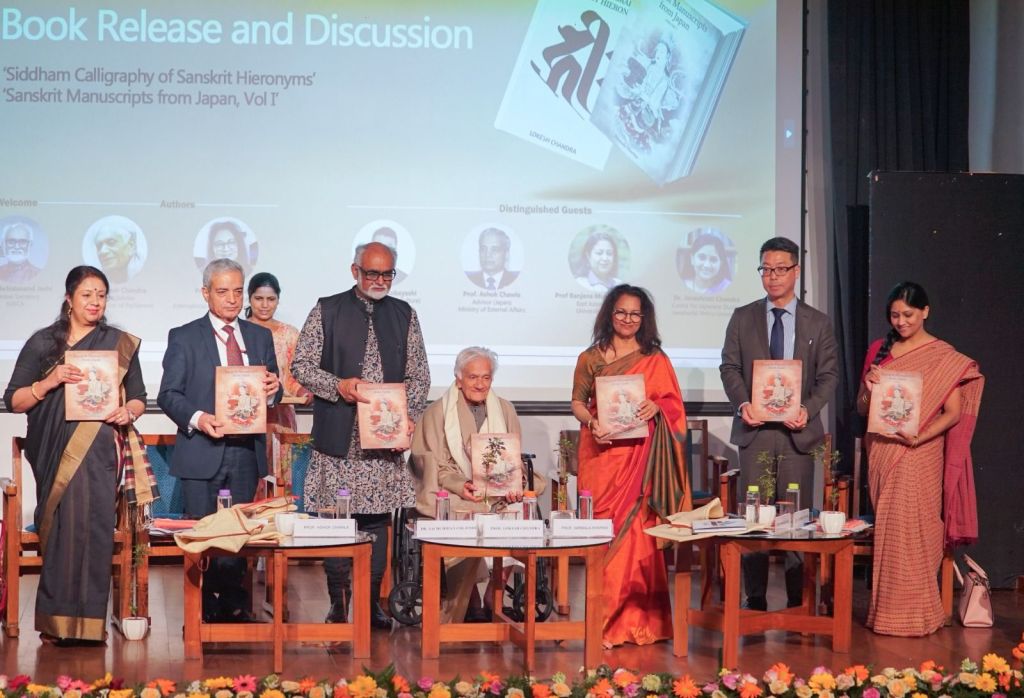20th May, New Delhi : To commemorate and celebrate International Museum Day, Ministry of Culture, Government of India held a three day International Museum Expo, 2023 from 18th to 20th May. The International Museum Expo was inaugurated by Hon’ble Prime Minister Narendra Modi in which he unveiled the plan for what is set to be the world’s largest museum, ‘Yuge Yugeen Bharat’, which will capture 5,000 years of India’s history. In this expo, discussions were held on various topics related to museums for three days, in which renowned national and international experts participated. On May 20, the last day of the International Expo, a panel discussion was held on a very important topic ‘De-museumisation of Indian Museums’. In this Panel discussion, Dr. Sachichidanand Joshi, Member Secretary, Indira Gandhi National Centre for the Arts, renowned Indian designer and art curator Mr. Rajeev Sethi, Director General of National Museum Kolkata, Mr. Arijit Datta Chowdhary, Director of Louvre Museum, Abu Dhabi, Manuel Rabate kept their views. Former Regional Director of Ranchi,Regional Centre of IGNCA Prof. Sanjay Jha and Dr. Achal Pandya, HoD, Conservation Division, IGNCA were also present on the occasion.
Dr. Sachichidanand Joshi said that the current trend in the museum sector is Euro-centric. In the Indian context, it can be termed as British-vision. The museum field grew out of collectors who were wealthy and travelled to faraway places and brought objects from colonies in Asia, Africa, the Pacific, South America, etc. to their countries (mainly European).The museum field developed from European and American visions throughout the world. Even the word ‘Museum’ is derived from the Greek word ‘Muse’. However, all these countries are full of goods looted, bought and gifted from their former colonies. These things are interpreted through the Western approach. The curriculum of Museology in India is based on the courses of the West. In this context, we see a trend which can be called museumisation of objects. In this, objects are not placed or displayed in context.
The museum sector has been plagued by such subtle discrimination since the inception of the first museum in India and this discrimination continues to this day. Artefacts and their collection sites (currently known as museums) in India need to be completely redefined and clarified. Even conservation should be in sync with Indian beliefs. The museum sector has been plagued by such subtle discrimination since the inception of the first museum in India and this discrimination continues to this day. Artefacts and their collection sites (currently known as museums) in India need to be completely redefined and clarified. Even conservation should be in sync with Indian beliefs.
Dr. Sachichidanand Joshi said, “All our places like temples, Gurudwaras, tombs etc. are living heritage, which are cherished by the local people. The arrangements of these places have been developed according to the local needs and culture. Tangible and intangible heritage are linked to each other. Our places like Taj Mahal, Golden Temple, Meenakshi Temple etc are living examples of the management of our cultural heritage. Another living example is the Ramaswamy Temple in Kumbakonam, where stories from the Ramayana are depicted on the walls of the temple. It can be seen as educational material for children. Art is a living tradition in India. Do it or sell your goods in ‘haats’ and emporiums. These ‘genuine artists’ are always at the mercy of the middlemen or keep waiting for government help. Even now the word artisan is used for artists of villages, tribal cultures, folk traditions. We still carry the colonial burden, which is humiliating and deprives us of a sense of pride as a nation. It really needs a complete revamp and our museums, art centres, art galleries need to be seen and appreciated from an Indian point of view.
Most museum professionals prefer to train in western institutions and museums. It is high time that museums for the benefit of the public at large, include Indian artists (folk, tribal, contemporary), musicians, dancers and all cultural forms , to be preserved, redefined, renamed and communicated according to the Indian context. With this, India can be counted among the most prosperous countries in the world in this field. Dr. Joshi said that this Euro-centric approach of the museum has not allowed many important aspects of the culture to develop or these aspects have disappeared from the museums. Conservation of artefacts is an important aspect of the museum. Dr. Joshi informed that IGNCA has been documenting the customs and rituals prevalent in India. An example of this is the documentation being done at the Brihadeshwara Temple in Thanjavur. In India and other countries where there has been continuity of civilization and tradition, it is observed that some important tangible practices are still followed in remote cultural areas of India. Along with the curators, hundreds of museology students also participatedparticipated in this panel discussion.
Dr. Achal Pandya, Head, Department of Conservation, IGNCA informed that in order to celebrate the International Museum Day, the Conservation Laboratory of IGNCA also organized a workshop on Conservation of Art to educate and raise awareness about the rich cultural wealth of India. , which was a part of the International Museum Expo.
IGNCA also organized an exhibition of ‘UNESCO POSTERS’ in the series of events to mark International Museum Day. On this occasion renowned archaeologist and former regional director of the Archaeological Survey of India, K.K. Muhammad’s lecture on the topic – Temple Conservation: Challenges in Chambal – A Story of Fallen Temples and Human Engineering’ was organised.






























































































